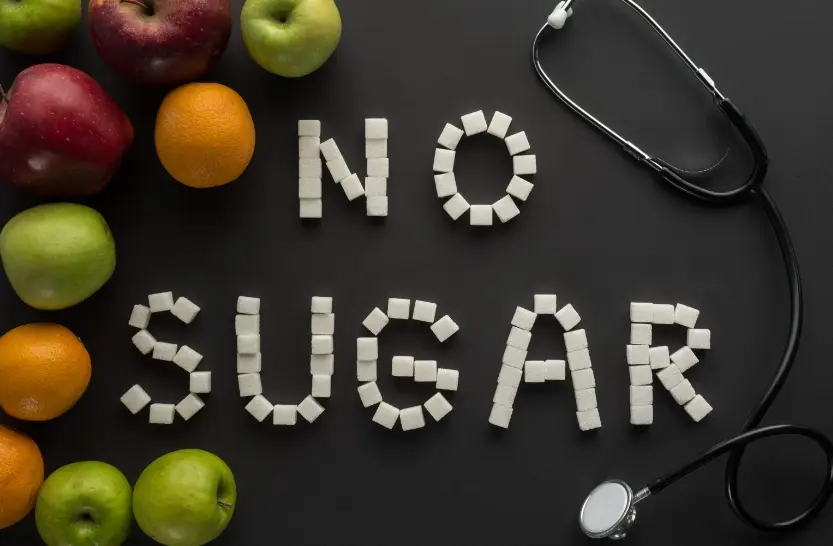Sugar Addiction – How to Take the First Steps Towards Freedom and Health
How to break the sugar habit-and help your health in the process
There’s a lot of talk about sugar addiction in the news lately, and this is a subject I love to talk about. I went through an addictions counselor’s training program a few years back, and have done a lot of reading on the subject since then. I want to share a few things I’ve learned about sugar addiction, and addictions in general, because there are some common misconceptions.

One thing many people don’t know is that the vast majority of people who are addicted to drugs and alcohol are able to kick their habits all by themselves.
Yes, there are withdrawal symptoms. And it often isn’t easy. But that doesn’t mean you can’t give up your habit. In fact, compared to many addictions, giving up sugar and other refined carbs is easy. It’s staying “clean” afterwards that’s hard.
The term “addiction” means that the withdrawal of that substance causes a physical reaction. This weekend I got to experience withdrawal symptoms because I decided to stop drinking coffee. I knew there would be a headache (and there was), so I scheduled my headache for the weekend.
I didn’t get much done around the house this weekend, but by Monday morning my headache was gone. Caffeine is addictive, but that doesn’t mean I can’t stop drinking coffee – it just means I’ll pay a small price if I do. Other drugs, such as tobacco, have far longer and more disturbing withdrawal symptoms. Sugar addiction’s withdrawal symptoms, by comparison, are quite mild.
Whether or not you’re successful in kicking an addictive habit depends on how you handle three different stages in the process. To make it easy to see what I’ll be talking about, I’ve drawn out the three stages here.
The black line on the left represents the status quo – before you’ve given up your habit. The red square represents the withdrawal symptoms that are a natural consequence of removing an addictive substance, like sugar, from your body. With sugar addiction, the withdrawal symptoms may be weakness, slight nausea, headache, and other fairly mild but possibly uncomfortable symptoms. My caffeine withdrawal headache lasted 2 days, sugar withdrawal symptoms may last for a week or two. Some people may experience little or no discomfort at all.
The blue line on the right represents life after withdrawal. That’s our goal, because it leads towards health.
The first step towards giving up a habit that involves an addictive substance is acknowledgment. It is very important to acknowledge that there are perfectly good reasons why you would like to make no changes – you enjoy the bagel in the morning, you like the taste of sugar, it helps you feel better in the afternoon, you enjoy sharing your baked goods with your friends and family, etc. We all have reasons for eating the way we do now. Acknowledge those reasons – it’s an important part of the process.
There are also very good reasons for giving up the sugar and white flour habit – it makes you fat, it leads to heart disease and diabetes, etc. Look at both sides of the issue, educate yourself as much as possible about nutrition, and then make a specific choice to give up sugar and other refined carbs, or not. If you’d like to learn more about the dangers of sugar and other refined carbohydrates, I highly recommend the book Eat to Live, By Dr. Joel Fuhrman.
If you make the choice to give them up, you are then faced with that red box filled with uncomfortable symptoms. This is where many of us fail, in spite of our best intentions. In fact, many people choose not to give up their addictions because all they can see ahead of them is the symptoms they will feel.
Instead of seeing a specific beginning and end of those symptoms, they look at it as though there were simply a big red wall. Knowing how long your symptoms will last will give you the strength to commit yourself to moving through the “red box” phase towards health.
There are many similarities to the process people go through when they give up an abusive relationship. If all you see is the loneliness you’ll feel when you leave, without being able to see that the period of mourning will be over in six months to a year, many people never make the first step. But also, if you don’t acknowledge that there will be a period of “withdrawal,” when you start feeling lousy you may be tempted to turn around and go back to the one thing you know for sure will make those symptoms go away.
Many people return to abusive relationships, drugs, and bad diets just days or weeks before the symptoms would have gone away on their own.
For this reason, it’s important to mark out the time when you know you won’t feel your best. Think of it as a voluntary case of the flu, and commit to working your way through it. In a few days it will be over, and you’ll be on the other side, looking at a lifetime of health.
Once you’ve worked your way through that “red box,” what do you do to keep from gradually going back to your old habits?
Read:
- Thyrolin: Best For Thyroid Health – stay full fit
- Piperinox: Elevate Your Weight Loss Experience with Nature’s Finest – stay full fit
- Fast Burn Extreme: An effective fat burner! Strengthens and adds energy – stay full fit